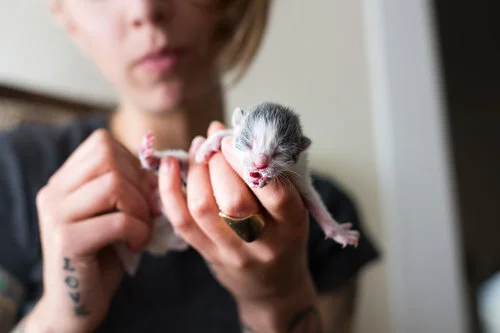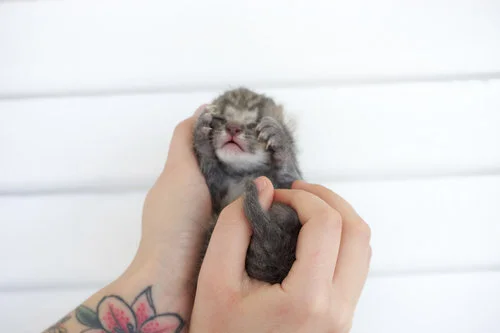Introducing the Litter Box
Learning how to use the litter box is an important part of early feline development, but "litter training" is a bit of a misnomer! Kittens naturally understand the litter box and will be drawn to use it as long as you provide them the proper encouragement. Here's what you need to know about helping get kittens on the right path.
1. Introduce Litter at the Right Time
Newborn kittens need to be stimulated to go to the bathroom, and won't start using the litter box until around 3 weeks of age. Once the kitten has reached 3 weeks, it's appropriate to introduce them to the litter box. Every kitten develops at a different pace, so be patient with the kitten and continue stimulating until you're confident she is using the litter box with regularity.
2. Choose a Litter That is Kitten-Safe
Kittens learn and explore in the same way human babies do--with their mouths. This means that you'll need to choose a litter that is safe for kittens so that they don't consume something toxic or dangerous. Kittens should not be given litter products that contain fragrances, harsh chemicals, or clumping properties. While clumping litter might be the standard for adult cats, it's a risk to kittens if ingested, and should not be provided until the kitten is at least 2-3 months old and well accustomed to the litter box.
Instead, opt for a natural, pellet-based litter that is less likely to be inhaled or ingested by a young kitten.
3. Choose the Right Box
Kittens require an open-top, shallow litter box that is easy for them to access and locate. Eliminate obstacles such as tall or covered boxes and provide something that is easy for them to walk in and out of until they're big enough for an adult litter box. For very young kittens under 8 weeks old, you can even use a cardboard tray (such as those used for canned kitten food) to provide a shallow lip for the tiny kitten to walk over.
4. Choose the Right Placement
Equally important is the placement. Kittens tend to be drawn to corners or other areas away from their main home base, so start by placing the litter box in a corner that is clean from clutter. A puppy pad placed under the box will make clean-up easier, as they can be messy learners.
When litter training kittens, you want to make it extremely easy for them to find a litter box at all times. Kittens have a natural drive to cover their waste, and will look for the most convenient space to do so. This means you'll want to keep them near a box throughout the duration of their transition, and avoid providing any messy areas such as piles of laundry where the kitten might develop bad habits. Ideally, a 3-8 week old kitten learning to use a box should be confined to one room so that they can easily find the litter box at all times. For older kittens acclimating to a larger space, it's best to offer multiple options so that the kitten is always within 10 feet of a litter box.
5. Use Positive Reinforcement
Kittens do well with positive reinforcement--not punishment. Provide praise when kittens use the box correctly!
If the kitten uses an area outside of the box, immediately clean and disinfect the area to avoid scent soaking or scent associations. If the kitten is using bedding or laundry, keep these items off the floor. If a kitten is frequently using the same location, place a litter box in the location. In some cases, switching to a new litter or using a product like Kitten Attract can help kittens who are truly struggling to understand the box.
6. Keep it Clean
No one wants to use a dirty toilet, and cats are no different! Clean the box throughout the day (once a day at a bare minimum) to encourage them to continue forming good habits. A clean box is more pleasant for you and for them, and will keep them coming back every time they need to use the bathroom.





